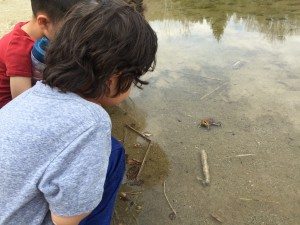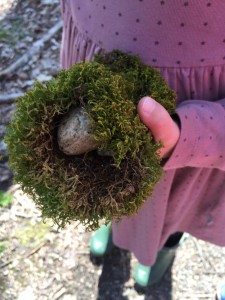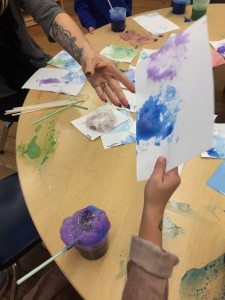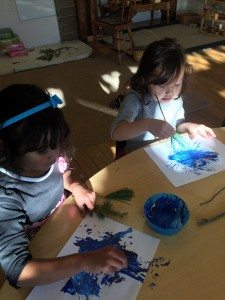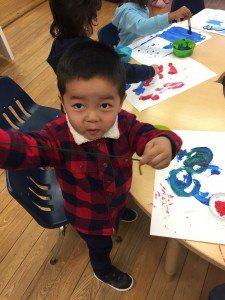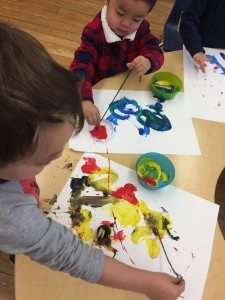Back to Nature
In PreK, we consider the grounds of BCD part of our classroom: being in nature does so much for the soul. There are numerous ways being in nature is beneficial so I will focus on the two most important to me as a teacher of younger children.
The first is, it improves creativity and complex thought. There are no toys, dolls, markers, blocks, magna-tiles or Legos in nature. When we are out exploring the campus we find branches, rocks, dried leaves, moss, bark, and more, that nature gives us. In Reggio-inspired classes, we call these “loose parts,” undefined ingredients and pieces that rely on the creativity of the children to “become” something. Letting PreK play in the woods provides endless opportunities for inventions, experiments, and collaboration. They make sticks into fishing rods, collect and add large sticks to the 8- foot nest they are creating, pretend branches are horses— we even found a fallen tree that was balanced on another fallen tree and made a seesaw!
The children are constantly making observations about their world. “This sand is heavier because it is wet,” “The seesaw works better if there are three kids on my side and the other side,” “The leaves in the stream float until they get really, really wet. Then they sink.” This play works the frontal lobes of their ever growing brain and helps develop more complex thinking, which they’ve used this year and will continue to expand as they move through the grades at school.
The second thing that nature has been proven to do is that it improves behavior and social interactions. The more time we spend in the woods at “our nest” and exploring the numerous paths and streams (even a beautiful waterfall!), the fewer disagreements I see between friends. Out in nature, the group has to work together to move big branches or to get up a muddy hill. They may sit quietly and watch the fish or search for worms together to save them from drying out. Whatever it is, the children are working together to reach a common goal. The more time we spend outside the happier and more connected the class becomes.
We are lucky to have BCD’s 27 acres, with trails, a pond, a garden, fields, and plenty of play areas, where we can reap the benefits of all nature can do for children. While we go outside in our snowpants and boots during the winter, the recent warm days have made us all the more excited about exploring the signs of spring. Our most recent activity was welcoming the frogs back to our pond and collecting some eggs so we could observe them—and the tadpoles that will soon be here—for “science” class and in our science journals.
In these final weeks of school, we’ll be taking the opportunity to spend even more time outside, we can’t wait for our next discovery!
https://childmind.org/article/why-kids-need-to-spend-time-in-nature/
